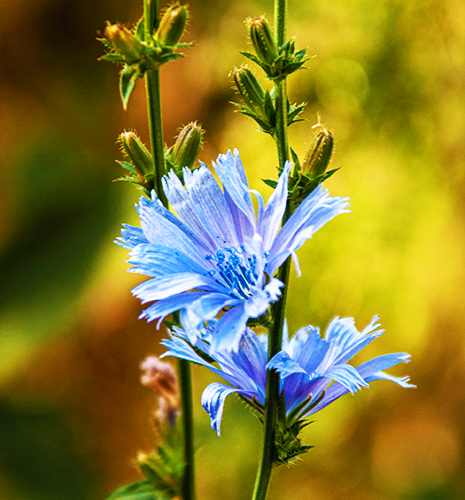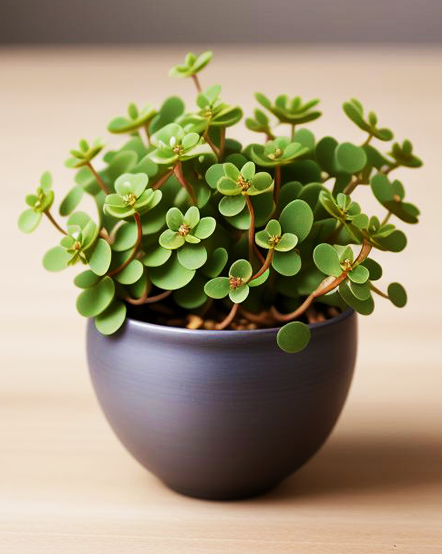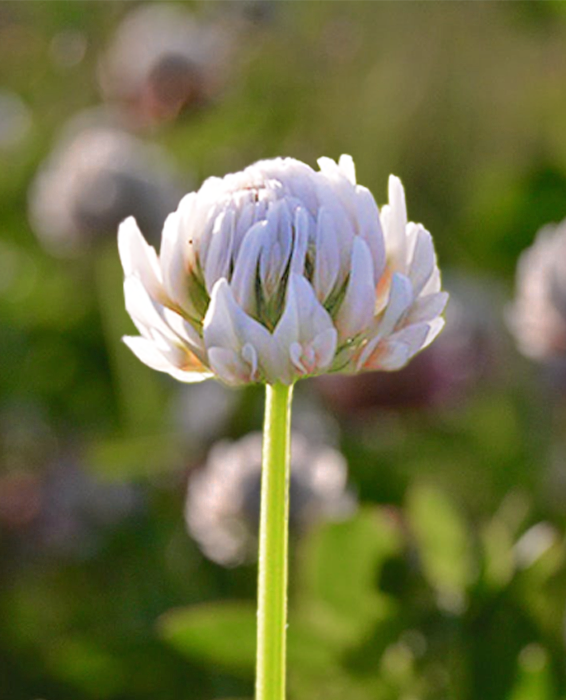Weeds are painted as the uninvited guests in our gardens, pushing their way through cracks in sidewalks and meticulously manicured lawns. They’re often seen as nuisances, tirelessly uprooted and sprayed with herbicides in the name of maintaining a lawn.
However, what if I told you that some of these “weeds” are not only edible but also incredibly nutritious?
In this article, we’ll explore a handful of common weeds, unveiling their hidden health benefits and their surprising potential to improve your well-being. From dandelions and purslane to chicory and clover, these often-overlooked plants may just change the way you look at your garden’s unwelcome intruders.
Dandelion

Dandelions, scientifically known as Taraxacum officinale, are common perennial flowering plants native to Eurasia and North America.
These plants are renowned for their distinctive bright yellow flowers and distinctive serrated leaves. Dandelions are often considered as weeds due to their ability to thrive in various habitats, including lawns, gardens, and roadside areas. However, they have a long history of traditional medicinal and culinary uses.
Benefits:
Dandelions are rich in flavonoids (phytochemical compounds), terpenes (biosynthetic building blocks made up of hydrocarbon), phenolic acid (type of aromatic compound), and antioxidants.
These are some of the nutrients found in dandelions: protein, fiber, calcium, potassium, selenium, vitamin C, beta carotene, vitamin A, lutein, zeaxanthin, vitamin E, and vitamin K.
- The higher content of potassium found in dandelions, could be used for aiding the cardiovascular system.
- Dandelion extract has been studied for its potential anti-inflammatory and skincare properties.
- Dandelion roots contain inulin, which is used for promoting healthy digestion.
The possible side effects of dandelions are: allergies, digestive discomfort, and it could interfere with medication.
Chicory

Chicory, known as Cichorium intybus, is a leafy perennial plant that belongs to the daisy family, Asteraceae. It is native to Europe, parts of Asia, and Africa. It has also been introduced to other parts of the world such as the Americas and Australia.
This plant is well-known for its attractive blue flowers and culinary uses. Chicory leaves are often used in salads, providing a slightly bitter, crisp, and refreshing taste.
Benefits:
Chicory root has a history of various culinary and medicinal applications. It is commonly roasted, ground, and used as a coffee substitute or coffee additive, offering a roasted, nutty flavor. Beyond its culinary uses, chicory has been explored for potential health benefits.
These are some of the nutrients found in chicory: vitamin K, manganese, inulin, flavonoids (phytochemical compound), tannins (polyphenol), beta carotene, and coumarins.
- Like other similar plants, chicory may have prebiotic and anti-inflammatory properties. This can support gut health by promoting the growth of beneficial gut bacteria.
- Some research has indicated that chicory may have anti-parasitic properties. Compounds in chicory have been studied for their potential to combat certain parasitic infections. However, more research is needed to fully understand and confirm this effect.
- Chicory might aid in detoxification processes and promote liver function, in which supports liver health.
The potential side effects of chicory are: allergies, digestive discomfort, and skin irritation.
(Common) Purslane

Purslane, Portulaca oleracea, is a common and versatile annual succulent plant found in regions around the world. Even though it is also considered a weed it is consumed in many cultures.
Purslane has been found to be drought-resistant and pest tolerant.
Benefits:
These are some of the nutrients found in purslane: vitamin E, vitamin C, magnesium, manganese, and omega-3 fatty acids.
- Purslane is one of the few leafy green vegetables that contain a notable amount of alpha-linolenic acid (ALA), a type of omega-3 fatty acid. Omega-3 fatty acids are known for their potential heart health benefits.
- Purslane contains various antioxidants, including vitamin C and vitamin E. These antioxidants help combat oxidative stress and reduce the risk of chronic diseases.
- The cultivation and consumption of purslane can contribute to crop diversity, which is important for maintaining biodiversity and food security.
The potential side effects of purslane are: allergies, can cause kidney stones (oxalate), digestive discomfort, exacerbate GERD symptoms, and might interferes with medication.
White Clover

White Clover, Trifolium repens, is a low-growing perennial plant that belongs to the legume family, Fabaceae.
Native to Europe and Central Asia, white clover has naturalized in many parts of the world. It is also widely recognized for it’s distinctive trifoliate leaves (leaves that are divided into three leaflets or segments) and white, globe-shaped flower heads. You can find white clover in many areas such as lawns or pastures.
Benefits:
These are some of the nutrients found in white clover: isoflavones (hormone, phytoestrogen), saponins (creates a soapy foam), flavonoids, antioxidants, protein, and minerals.
- White clover is a legume with the unique ability to fix atmospheric nitrogen through the nitrogen-fixing bacteria in its root nodules. This nitrogen fixation enriches the soil, providing a natural source of fertilizer for neighboring plants.
- While known for more traditional medicinal uses, in recent studies, white clover was tested for anticancer uses and might inhibit cancer proliferation.
However, it’s important to note that research in the field of natural compounds and potential cancer prevention is ongoing, and new studies may emerge.
- White clover is a rich nectar source for bees and other pollinators. It plays a crucial role in supporting honeybee populations and contributes to local ecosystems by promoting pollination.
The potential side effects of white clover are: allergies, blood thinning, might interfere with medication, and it contains oxalates.
Malva

Malva (also known as mallow), Malva sylvestris, is a genus of flowering plants in the family Malvaceae, comprising over 200 species of annuals and perennials. Malva can be found in Asia, Europe, and Africa.
Benefits:
These are some of the nutrients found in malva: antioxidants, flavonoids, terpenoids, and omega-3 fatty acids.
- Malva is known for its soothing and anti-inflammatory properties. It is often used topically to alleviate skin irritations, including burns, insect bites, and rashes.
- It has been used to ease respiratory discomfort. It is believed to help with conditions such as bronchitis and sore throat. The mucilage (secretion) content in malva is thought to have a soothing effect on the throat and airways.
- Malva leaves and flowers are edible and are a source of various vitamins and minerals. They can be used in salads or cooked dishes to provide additional nutrients to the diet.
The potential side effects of malva are: allergies, digestive discomfort, and it may interfere with medication.
While these plants offer a plethora of nutritional benefits, it is essential to recognize that not all individuals respond the same way.
Consumption should be monitored to account for potential adverse reactions or allergies.

